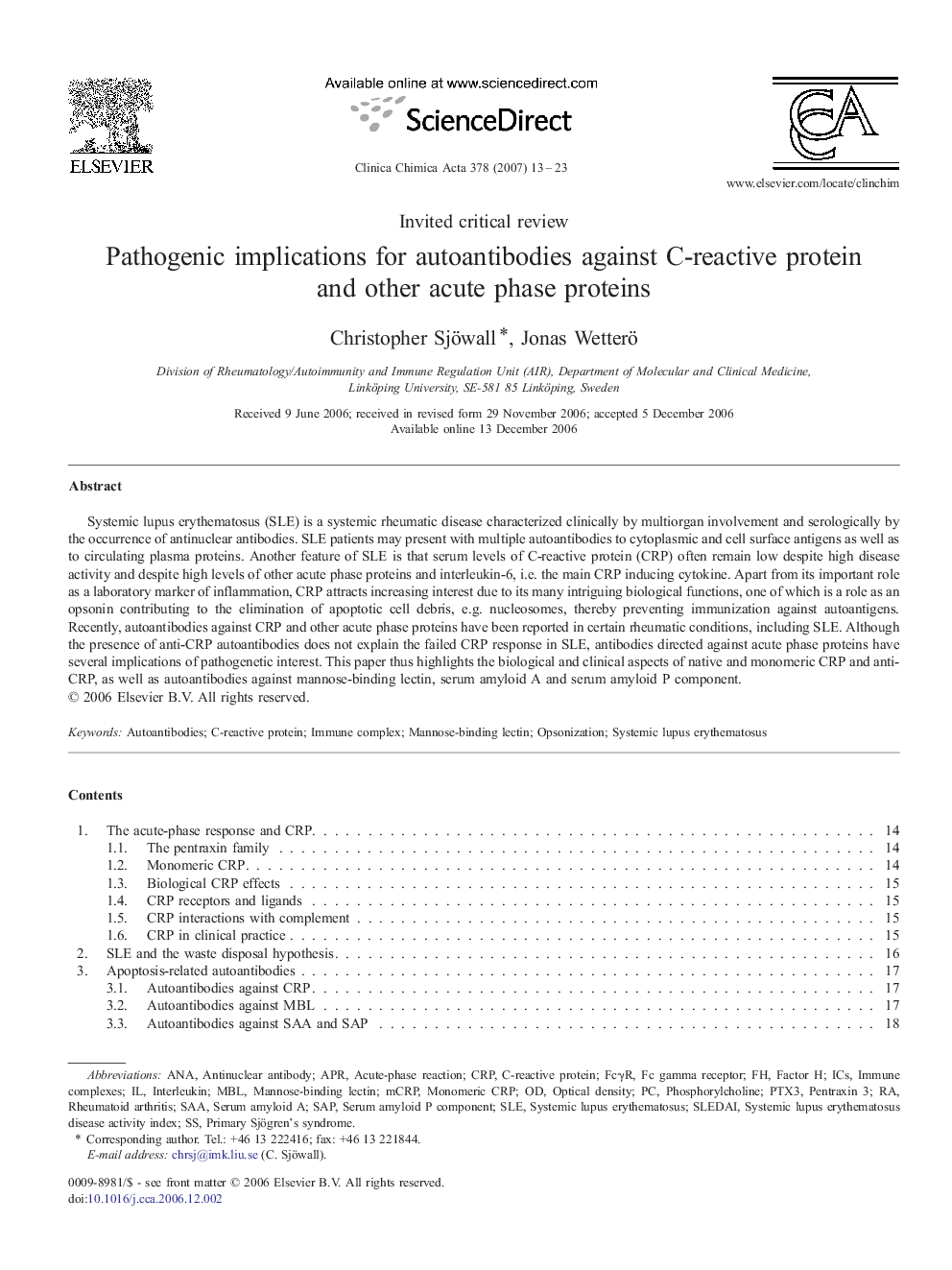| Article ID | Journal | Published Year | Pages | File Type |
|---|---|---|---|---|
| 1967633 | Clinica Chimica Acta | 2007 | 11 Pages |
Systemic lupus erythematosus (SLE) is a systemic rheumatic disease characterized clinically by multiorgan involvement and serologically by the occurrence of antinuclear antibodies. SLE patients may present with multiple autoantibodies to cytoplasmic and cell surface antigens as well as to circulating plasma proteins. Another feature of SLE is that serum levels of C-reactive protein (CRP) often remain low despite high disease activity and despite high levels of other acute phase proteins and interleukin-6, i.e. the main CRP inducing cytokine. Apart from its important role as a laboratory marker of inflammation, CRP attracts increasing interest due to its many intriguing biological functions, one of which is a role as an opsonin contributing to the elimination of apoptotic cell debris, e.g. nucleosomes, thereby preventing immunization against autoantigens. Recently, autoantibodies against CRP and other acute phase proteins have been reported in certain rheumatic conditions, including SLE. Although the presence of anti-CRP autoantibodies does not explain the failed CRP response in SLE, antibodies directed against acute phase proteins have several implications of pathogenetic interest. This paper thus highlights the biological and clinical aspects of native and monomeric CRP and anti-CRP, as well as autoantibodies against mannose-binding lectin, serum amyloid A and serum amyloid P component.
